'Learning to be -less afraid- braver' - Lwando Dlamini
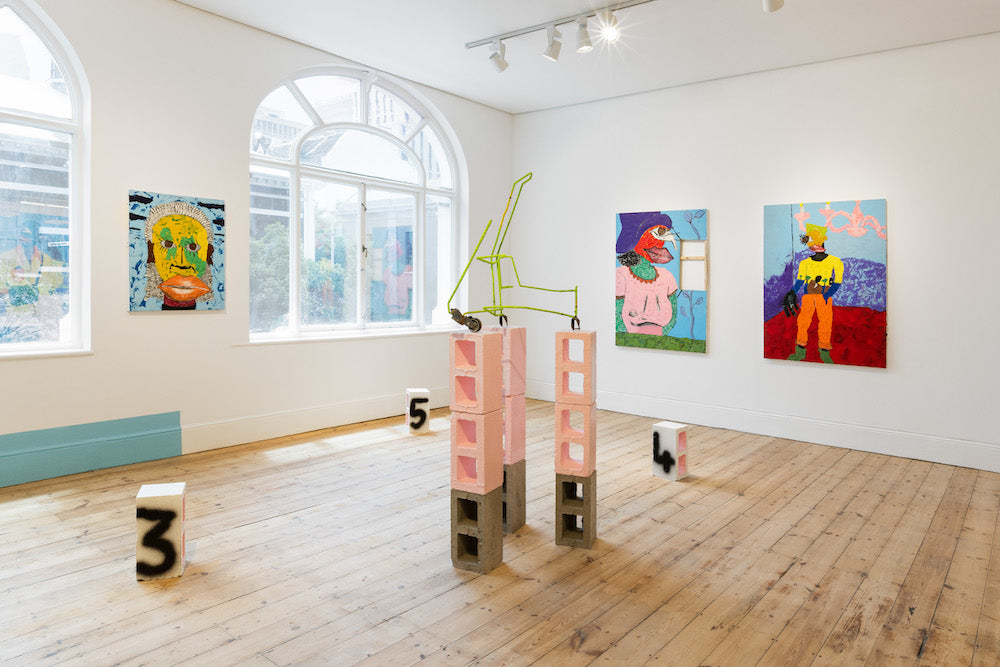
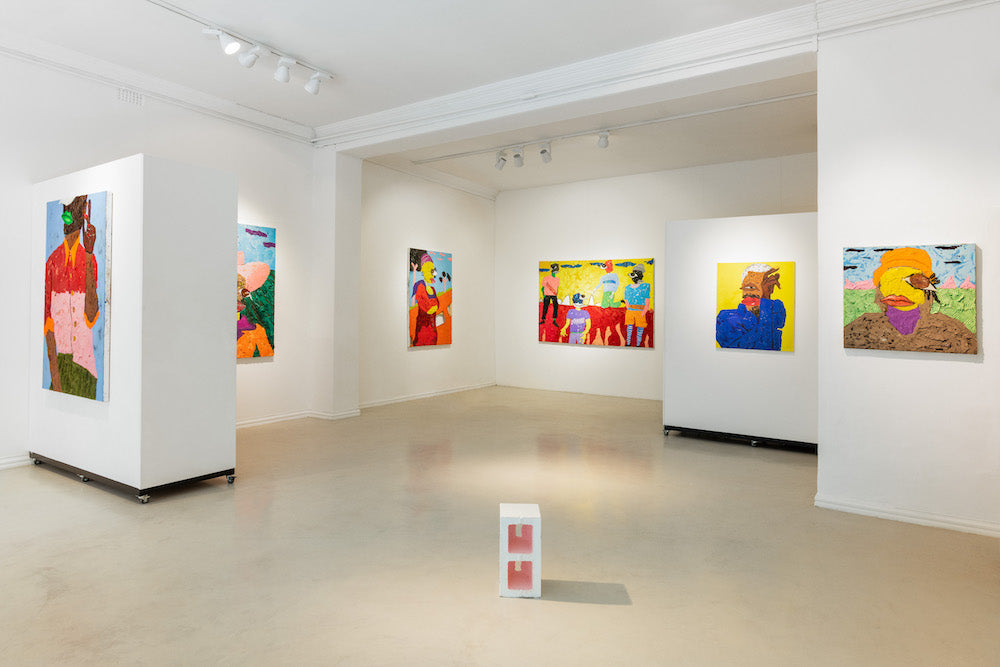
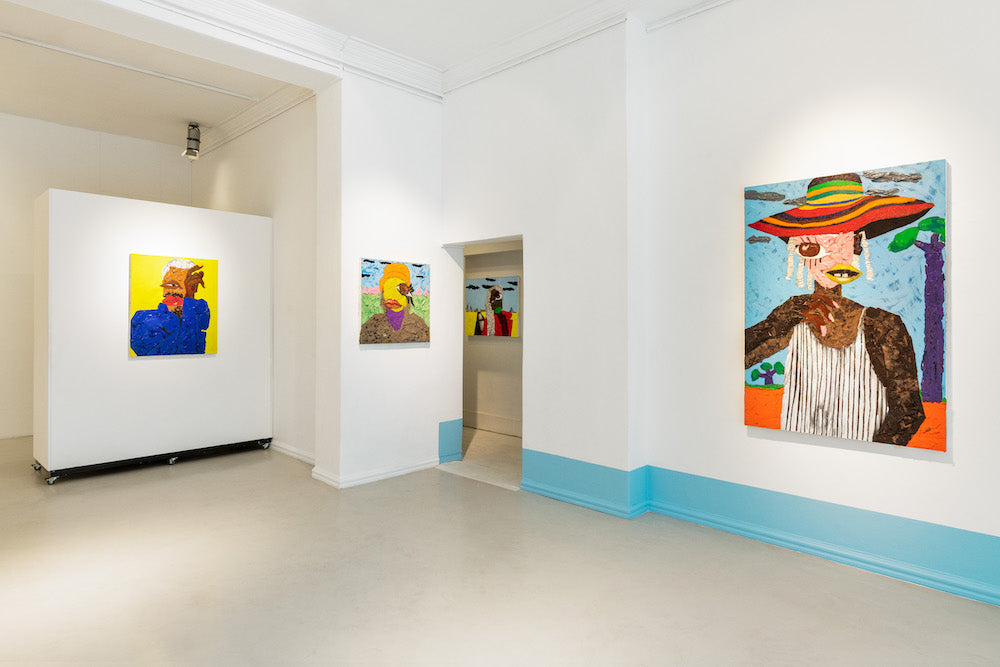
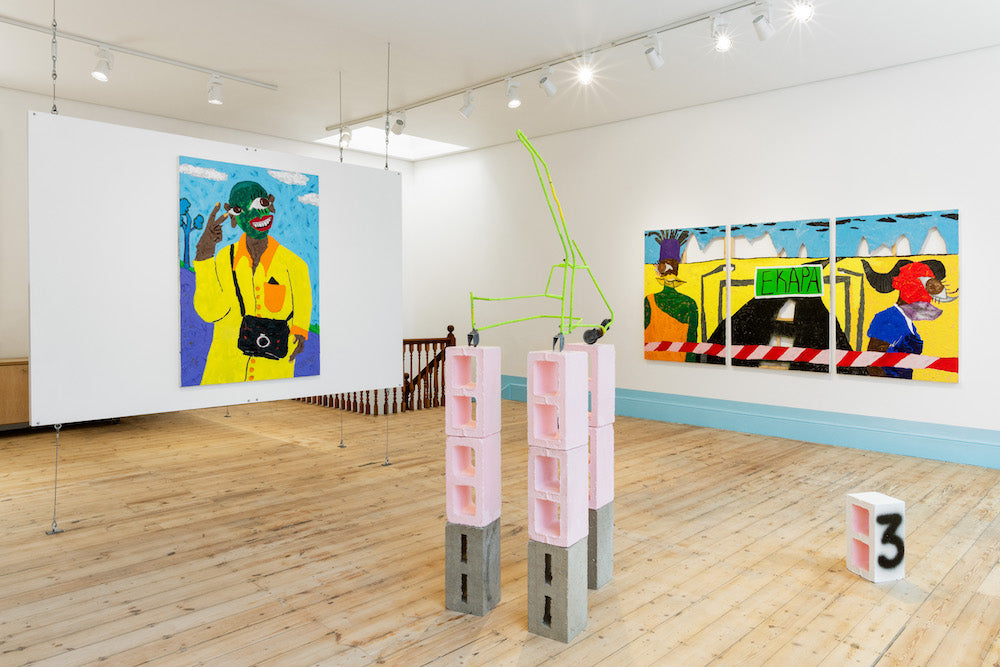
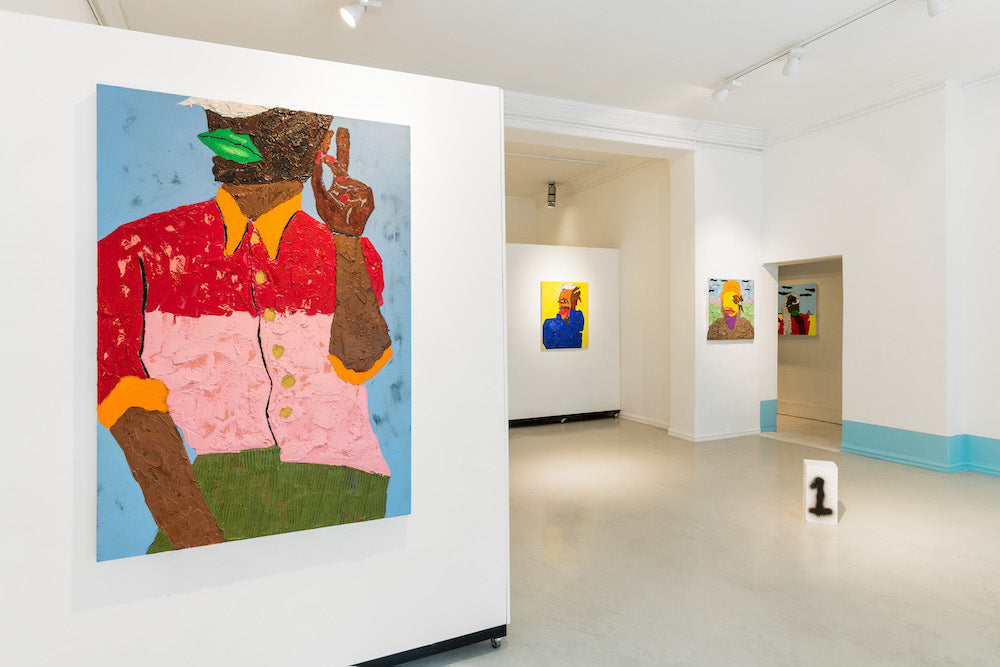
Collection: 'Learning to be -less afraid- braver' - Lwando Dlamini
EBONY/CURATED Loop Street, Cape Town
Wednesday 2 February 2022
Continues until 26th March 2022
To be less afraid is not the same thing as to be brave. To be less afraid means to continue to be cautious, to tread lightly and to take calculated risks. Being brave, on the other hand, requires absolute vulnerability — one throws themselves into a situation fully and continues to show up; recalling author Han Kang’s ideas of “stepping recklessly into a time you have not yet tried and into a story you have not yet written.”
For his second solo exhibition at Ebony/Curated, Lwando Dlamini is learning how to be lESS AFRAID brave. The exhibition brings together new paintings and an installation that reveal the artist’s processes and meditations on what it means to create boldly — he is stretching, pushing and going where he has not gone before.
Contemplating the various ways in which one can be brave and the implications of that in creative practice, Dlamini explores colour, texture and form. Working outside of the norms of the discipline of painting, he began experimenting with a new process of cutting, stitching and collaging. In City Girl I, Faith, Jaymirys Craveiro and Ndigqwesile (Outstanding) the artist carves out parts of the canvas in various shapes, allowing the viewer to see the skeleton of the canvas. The fragments are later stitched onto other paintings (These are the champions II and Xhosa man), creating a new layer of meaning. These choices are intuitive and embody the artist’s natural proclivity towards experimentation.
In his work, Dlamini layers paint thickly onto the surface so that brushstrokes and palette knife marks are visible. This has become a distinct feature of his oeuvre. In Learning how to be lESS AFRAID brave Dlamini highlights his commitment to testing the boundaries of his working mediums. In Dimpho, we see a figure against a blue background — hand raised, body twisted… nonchalant relaxation. The work diverges from Dlamini’s classic method of applying paint and rather emphasises feeling through posture. Lovers and friends is a sincere shot of an intimate moment as two figures are painted embracing each other, almost morphing into one. The painting is vibrant and warm and reflects life. We are witnessing something special.
American researcher Brene Brown suggests that we can choose courage or we can choose comfort but that we cannot claim both. Similarly, in Dlamini’s works, we are confronted with discomfort – images and figures that are curved and distorted, with certain features (eyes and lips in particular) exaggerated and others (nose and ears) minimised. These are extraordinary images not concerned with simple ideas of beauty — but rather, they are an investigation of fragility and the strangeness of life.
Another aspect through which Dlamini pushes himself is through his employment of colour. Thinking about colour author Robyn Ferrel writes on Matisse’s reflections;
“The effect of color has real power…So much power that, in certain lights, it seems to become a substance. Once when I found myself in the chapel, I saw on the ground a red of such materiality that I had the feeling that the color was not the effect of light falling through the window, but that it belonged to some substance.” Similarly in Dlamini’s paintings, colour takes on new characteristics and material properties — yellow, red, blue and pink catch your eye. Once Kandinsky asked; “Which colour is similar to the singing of the canary, the whistle of the wind, repulsion, a storm, the moo of a cow? And through colour can you express feelings about science and life? And also, is yellow round or square?” In Dlamini’s works yellow adapts, at times it colours the skin of his figures or an item of clothing, and at other times it is the background upon which the drama of unfolds.
Unheard Voices II is an installation comprising concrete bricks placed to evoke a crime scene. The installation is a kind of trace of memory — connecting the difficult fragments of Dlamini’s life with the lighter, more joyful aspects. Perhaps this is a reminder that “you can’t be brave if you’ve only had wonderful things happen to you” as instructed by Tyler Moore. Just as his older work explored his life in relation to violence, this installation recalls those experiences and acknowledges them with the intention of moving forward.
In another sense, Learning how to be lESS AFRAID brave is about growing up, becoming, and making it through a crisis.
– Text by Nkgopoleng Moloi
Works on exhibition
-
YOU WANT TO BAMBA?? YOU WANT TO CHILL WITH THE BIG BOYZ?? NOW YOU DEY RUN KITIKITI YOU DEY RUN KATAKATA NO FIT DRINK WATER DROP CUP!
Vendor:Lwando Dlamini (1992- )Regular price R 44,000.00Regular priceUnit price / per -
THESE ARE THE CHAMPIONS II
Vendor:Lwando Dlamini (1992- )Regular price R 80,000.00Regular priceUnit price / per -
NTOKOZO MKHIZE
Vendor:Lwando Dlamini (1992- )Regular price R 34,000.00Regular priceUnit price / per -
NDIGQWESILE (OUTSTANDING)
Vendor:Lwando Dlamini (1992- )Regular price R 140,000.00Regular priceUnit price / per -
MALUNGELO II
Vendor:Lwando Dlamini (1992- )Regular price R 44,000.00Regular priceUnit price / per -
LOVERS AND FRIENDS
Vendor:Lwando Dlamini (1992- )Regular price R 56,000.00Regular priceUnit price / per -
KENYA MJULENI - LOVE & PEACE
Vendor:Lwando Dlamini (1992- )Regular price R 56,000.00Regular priceUnit price / per -
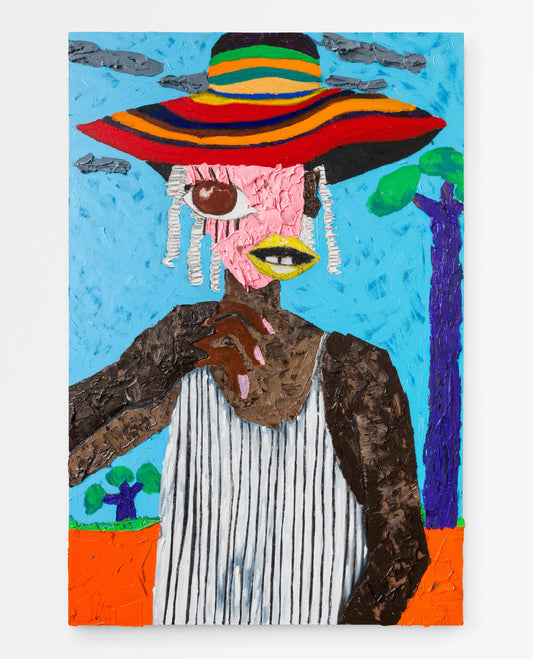 Sold
SoldKATLEHO MALEFANE
Vendor:Lwando Dlamini (1992- )Regular price R 56,000.00Regular priceUnit price / per -
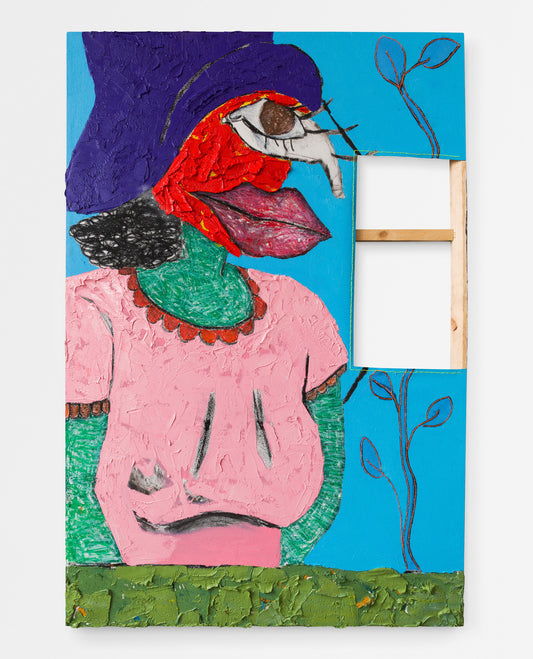 Sold
SoldJAYMIRYS CRAVEIRO
Vendor:Lwando Dlamini (1992- )Regular price R 56,000.00Regular priceUnit price / per -
CITY GIRL II
Vendor:Lwando Dlamini (1992- )Regular price R 44,000.00Regular priceUnit price / per -
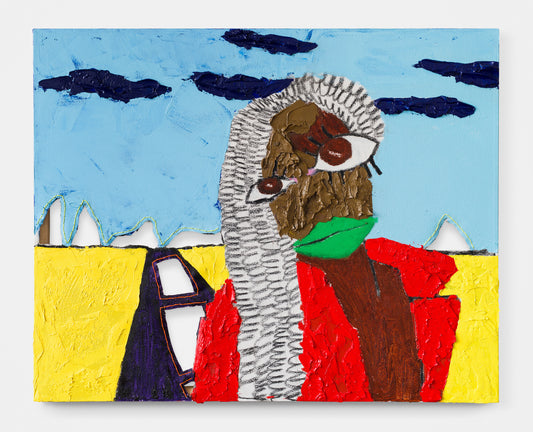 Sold
SoldCITY GIRL I
Vendor:Lwando Dlamini (1992- )Regular price R 44,000.00Regular priceUnit price / per
More exhibitions
-
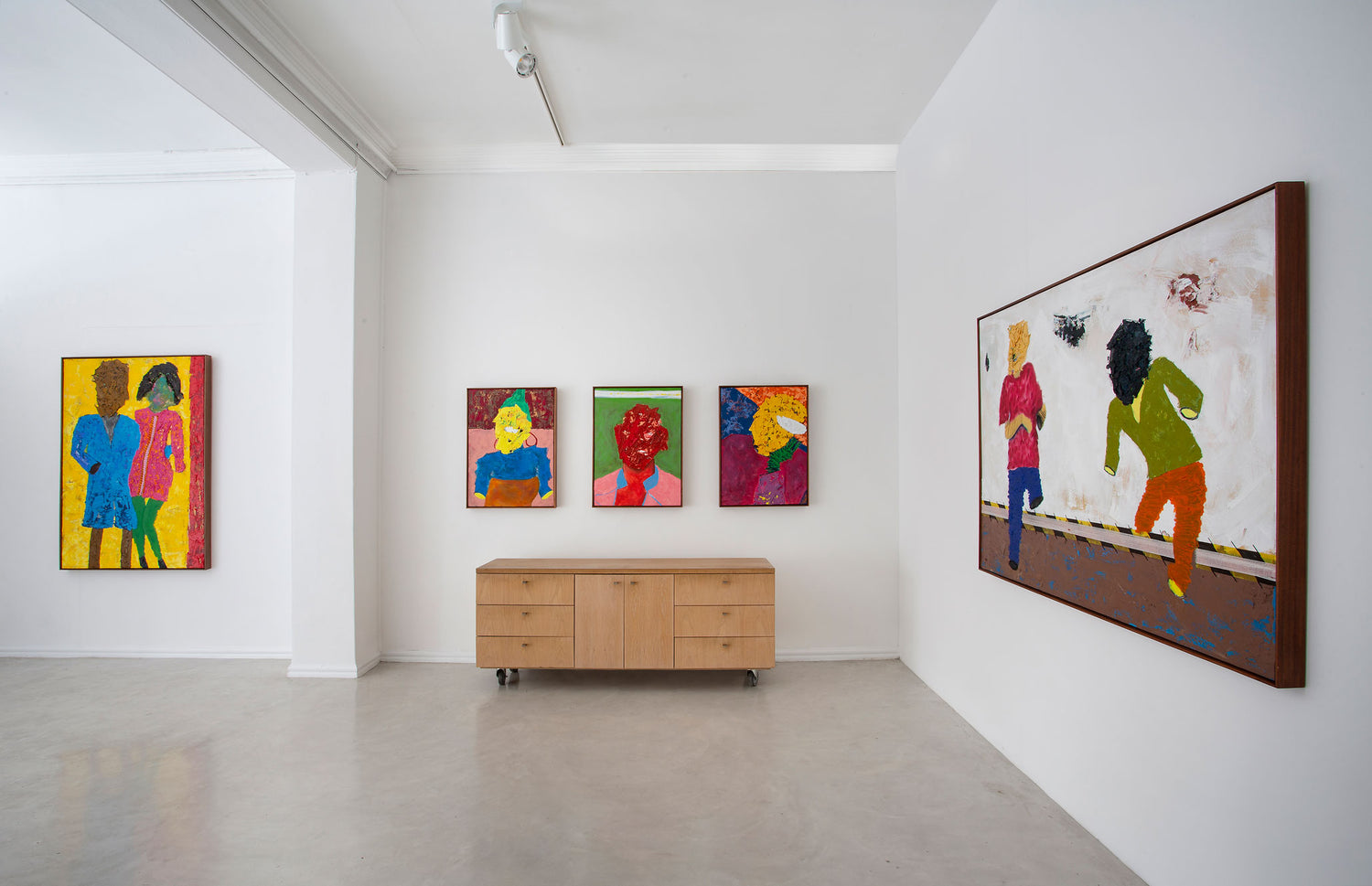
'TRIUMPH' - Lwando Dlamini
08.07.20 - 31.08.20EBONY/CURATED, Cape Town Text by Amogelang Maledu Triumph...
-
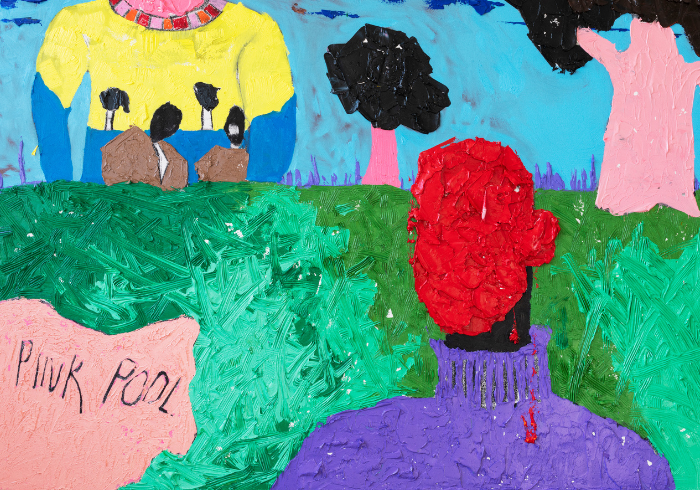
FNB Art Joburg 2021
28.10.21 - 07.11.21 EBONY/CURATED is pleased to present a selection of works...
-
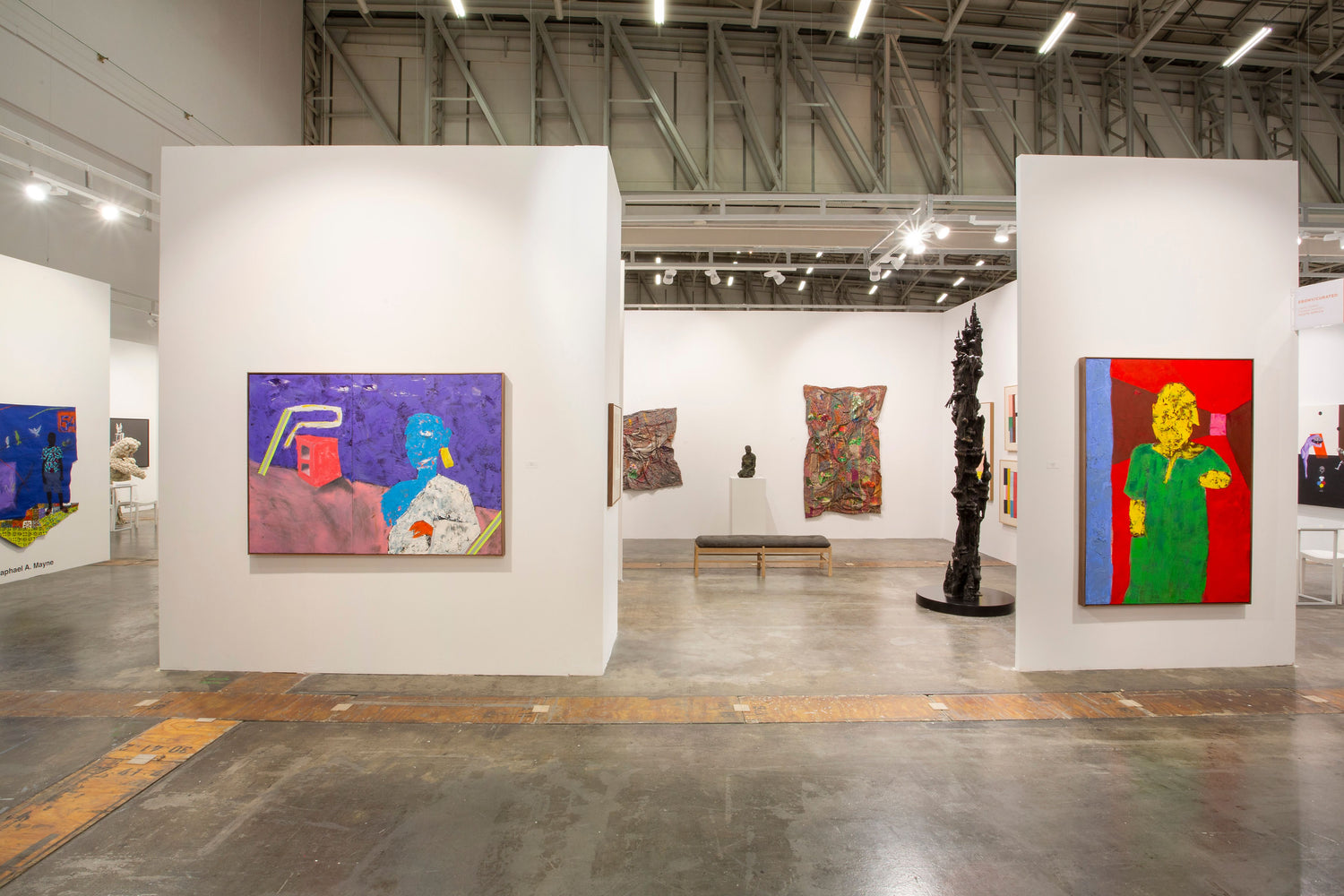
Investec Cape Town Art Fair 2020 | Main Section
14.02.20 - 16.02.20CTICC, Cape Town Hugh Byrne Patrick Bongoy Lwando Dlamini...


















